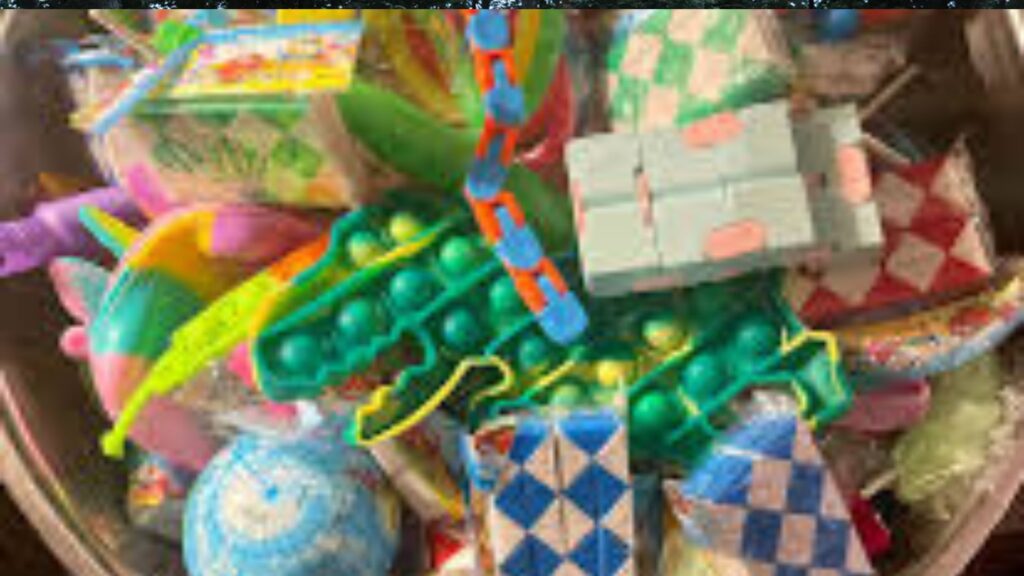In recent years, fidgets for kids have become increasingly popular, both in schools and at home. These small, handheld toys are designed to keep children engaged, calm, and focused, offering a unique way to channel excess energy and reduce anxiety. Whether in the classroom, during homework time, or at home, fidget toys have been recognized for their ability to provide children with a healthy outlet for their restlessness, improve concentration, and enhance fine motor skills. In this article, we’ll explore what fidgets for kids are, the benefits they provide, and the various types available. Additionally, we’ll answer some common questions about fidget toys and their role in children’s development.
Table of Contents
What Are Fidgets for Kids?
Fidgets for kids refer to small, sensory toys that children can manipulate with their hands. These toys are designed to be discreet and easy to use, making them ideal for moments when a child needs to stay focused but also has a lot of energy or restlessness. Fidget toys often involve actions like spinning, squeezing, clicking, or rolling, and they provide sensory stimulation that can help children calm down or concentrate.
Common examples of fidgets for kids include items like:
- Fidget spinners
- Stress balls
- Fidget cubes
- Pop-it toys
- Tangle toys
- Twist-and-turn gadgets
These toys come in various shapes, sizes, and textures, and each one offers a unique way for children to engage their hands and minds.
The Benefits of Fidgets for Kids
1. Improved Focus and Concentration
One of the most significant benefits of fidgets for kids is their ability to improve focus and concentration. Children who are easily distracted or have trouble sitting still may find that using a fidget toy helps them concentrate better during tasks that require sustained attention. The repetitive motion of fidgeting can engage a child’s sensory system, making it easier for them to focus on the task at hand.
For children with attention deficit hyperactivity disorder (ADHD), fidgets for kids can be particularly useful. Research has shown that fidgeting can help children with ADHD manage their energy and stay engaged in activities for longer periods.
2. Stress and Anxiety Relief
Fidget toys can also help children manage stress and anxiety. The repetitive movements and tactile stimulation provided by these toys have a calming effect, making them ideal for children who experience anxiety or nervousness. The act of fidgeting can help release built-up tension, making children feel more relaxed and in control.
Many children benefit from using fidget toys during stressful situations, such as before a big test or presentation, or when they are feeling overwhelmed by emotions.
3. Sensory Stimulation
Children, particularly those with sensory processing disorders or autism spectrum disorder (ASD), may seek sensory stimulation to help them regulate their emotions and focus. Fidgets for kids can provide just the right type of sensory input, whether through tactile, auditory, or visual stimulation. This input can help children calm down, reduce overstimulation, and increase their comfort in their environment.
Fidget toys can also serve as a tool for children who need help with fine motor skills. Manipulating small objects helps children develop hand-eye coordination, dexterity, and finger strength.
4. Enhanced Self-Regulation
Fidget toys offer children a way to self-regulate their behavior and emotions. By giving kids an outlet for their physical energy, they may become less impulsive and more mindful of their actions. This is especially beneficial for children who tend to act out due to boredom, frustration, or an inability to focus. Having a fidget toy on hand can help them redirect their energy in a productive way, allowing them to regain control over their actions.
5. Encouraging Creativity
Using fidgets for kids can also spark creativity. These toys allow children to experiment with different movements and patterns, which can stimulate their imaginations. For instance, a child might find new ways to interact with a fidget spinner or come up with their own games using a tangle toy. This freedom of exploration encourages creative thinking and problem-solving skills.
Popular Types of Fidgets for Kids
There are many different types of fidgets for kids available, each offering a different sensory experience. Here are some of the most popular options:
1. Fidget Spinners
Fidget spinners were one of the earliest and most popular fidget toys. These small devices have three arms with a ball bearing in the center that allows them to spin rapidly. Fidget spinners are easy to use and provide both visual and tactile stimulation. They are a fun way to relieve stress and can be used in classrooms or at home.
2. Fidget Cubes
Fidget cubes are small, handheld devices that have multiple sides, each with a different type of tactile feature. For example, one side might have buttons to press, another side might have a switch to flip, and another could have a rolling ball. Fidget cubes offer a variety of sensory experiences and can be used by children who need different kinds of stimulation.
3. Pop-it Toys
Pop-it toys are silicone toys with bubbles that can be pressed and popped repeatedly. These toys are especially popular among younger children and offer a satisfying tactile experience. The simple act of popping the bubbles can have a calming effect, and the toy can be used for sensory play or as a stress-relieving tool.
4. Stress Balls
Stress balls are squishy, squeezable toys that can help children release pent-up energy or anxiety. They come in various textures and resistance levels, allowing children to choose the one that works best for them. Squeezing a stress ball can help children manage their emotions and improve hand strength and coordination.
5. Tangle Toys
Tangle toys are made up of interconnected pieces that can be twisted and turned in a variety of ways. These toys are designed to keep the hands busy and provide a relaxing sensory experience. Tangle toys are excellent for improving fine motor skills and promoting concentration.
6. Twist-and-Turn Gadgets
These fidget toys consist of interlocking pieces that children can twist, turn, and rearrange. Twist-and-turn gadgets provide an engaging and satisfying tactile experience. They are ideal for kids who enjoy fidgeting with small objects and like to create patterns or shapes.
How to Choose the Right Fidget for Kids
Choosing the right fidget for kids depends on several factors, including the child’s age, preferences, and the specific needs they have. Here are some tips for selecting the best fidget toy:
- Consider Sensory Needs: If a child has specific sensory preferences, like a need for tactile input, a stress ball or pop-it toy may be ideal. For children who enjoy auditory stimulation, a fidget cube or spinner might be more suitable.
- Choose Age-Appropriate Toys: Ensure that the fidget toy is age-appropriate. Younger children may prefer simpler toys like pop-its or stress balls, while older kids might enjoy more complex options like fidget cubes or twist-and-turn gadgets.
- Durability: Look for toys that are durable and made from high-quality materials. Fidget toys are often used frequently, so they need to withstand repeated use without breaking.
- Portability: Choose fidgets that are easy to carry around. Smaller, lightweight toys are ideal for bringing to school, traveling, or using during homework time.
FAQs About Fidgets for Kids
1. Are fidget toys only for children with ADHD?
No, fidgets for kids can be beneficial for all children, not just those with ADHD. While they are particularly helpful for children with attention challenges, any child can benefit from using fidget toys to improve focus, manage stress, and encourage creativity.
2. Can fidget toys be used in the classroom?
Yes, many teachers use fidget toys in the classroom to help children stay focused and calm. However, it’s important for teachers to ensure that the toys are used appropriately and do not become a distraction to others. Many schools allow fidget toys as long as they do not interfere with learning.
3. Are fidget toys safe for children?
When used properly, fidgets for kids are safe. However, it’s important to choose age-appropriate toys and avoid small parts that could be a choking hazard for younger children. Always supervise young children while they are using fidget toys.
4. Do fidget toys really help with focus?
Yes, for many children, fidget toys can help improve focus by providing a healthy outlet for physical energy. The act of fidgeting can increase concentration and reduce distractions, making it easier for children to engage in tasks like reading, homework, or listening to a lesson.
5. Can fidget toys improve fine motor skills?
Yes, many fidget toys require children to use their hands in specific ways, which helps improve fine motor skills. Toys that involve twisting, squeezing, or manipulating small parts can strengthen hand muscles, improve dexterity, and promote hand-eye coordination.



